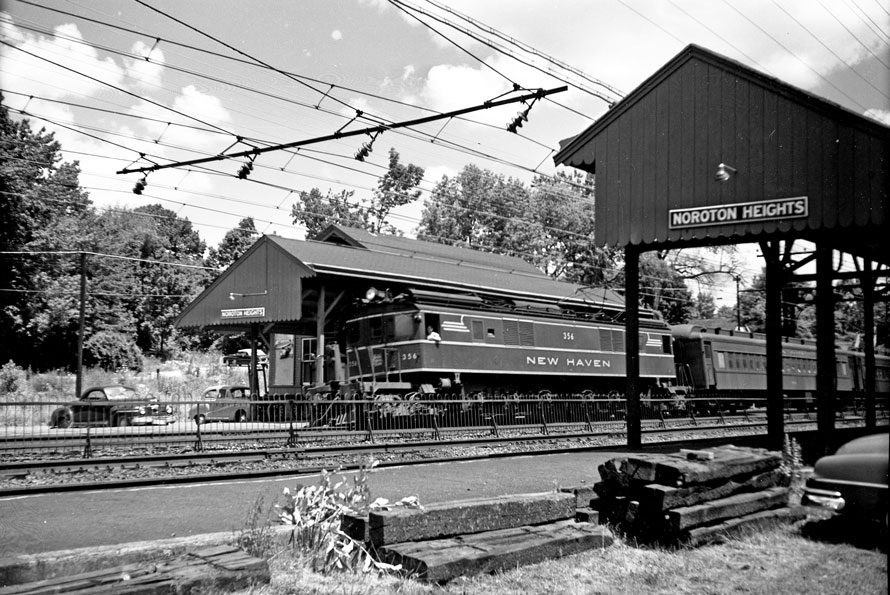
How did you discover trains? I was four, and my grandpa “Pop” enjoyed taking me for walks. Pop’s house in New Rochelle, New York was a walk from a bridge over the New Haven Railroad’s four track electrified main line. Once there, I peered through the fence, intently watching for a headlight in the distance. I was soon able to identify a “local” on the outside track and an express. We went to the bridge as often as I could convince Pop of the need to go, and never left until we saw at least one New Haven train.
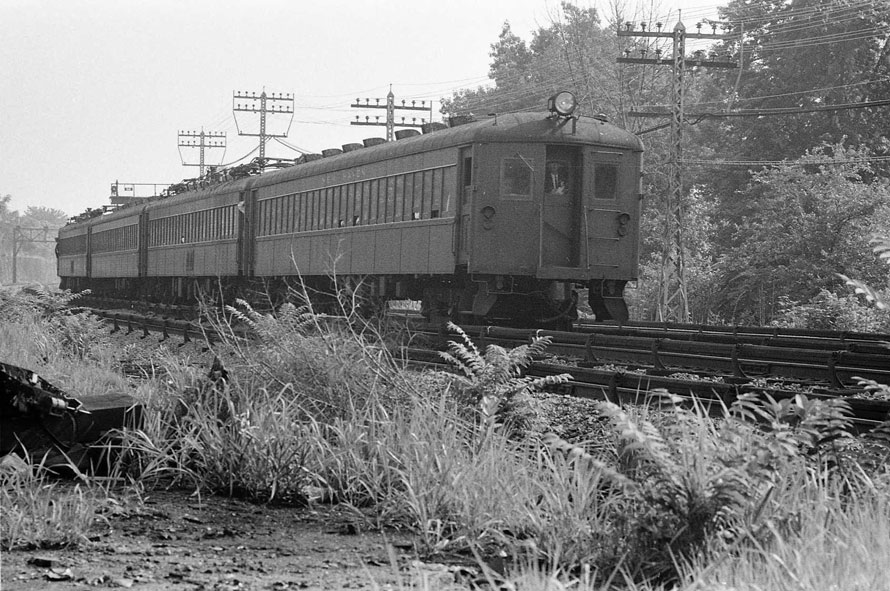
The next year Santa (actually my other “Grandpa”) built a small Lionel layout, with a circle of track and two switches. New York Central Steam engine, tank car, gondola car, hopper car, and caboose.
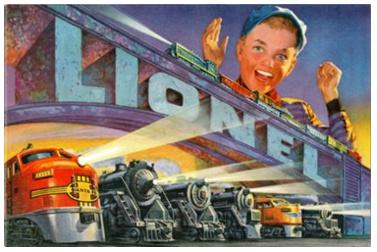
I was off to the races! Grandpa’s house was within a block of the Erie main line through Garfield, New Jersey, and the steam engine’s whistle could be heard far enough away so we had time to race to the porch and watch the huge locomotive with ERIE on the tender working hard to pull the freight cars and caboose up the grade.
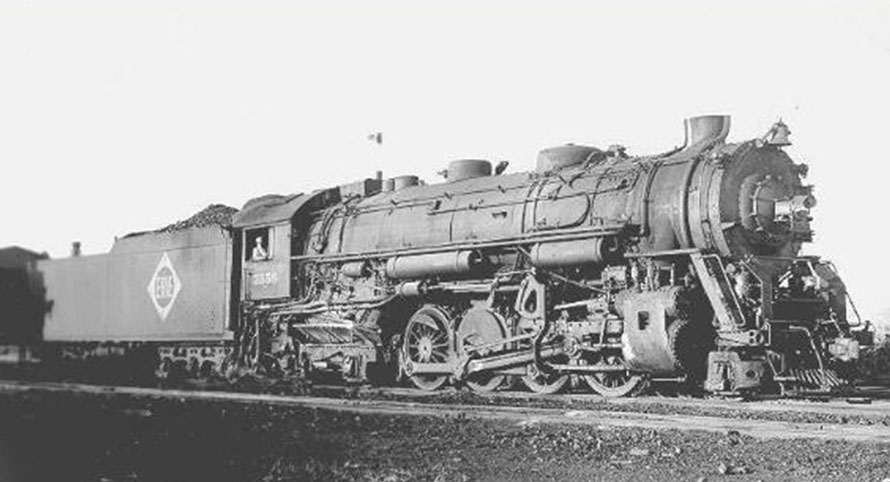
When he saw me, the man in the caboose always waved to me. I thought that was neat.
Grandpa had a summer house on the Jersey Shore in Lavallette which the family often visited on weekends or for longer summer vacations. After a day at the beach, Grandpa said he was driving up to Bay Head Jct to meet the train from New York. Did I want to come along? Yes, please, Grandpa!
I watched the tracks until the bright headlight appeared, miles away. It was quiet, with the only sounds being from the beach crickets, until I could hear the whistle blowing for each road crossing the tracks. The headlight got brighter and bigger with the train still miles away. In no time the biggest steam engine in the world (or so it seemed) eased to a stop with an endless line of red Pennsylvania coaches in tow. The passengers poured off from every door, eager to get their summer weekends started, and just as quickly the platform was empty again.
One day Grandpa and I were picking up my aunt, but she didn’t get off the train! Alarmed, I told the Conductor I was worried about her. He looked down at me with a smile while he glanced at his gold pocket watch. “Not to worry, sonny. There’s another train five minutes behind us. She’ll be on that train.” And, she was. It wasn’t until much later that I learned what a “section” was, and that the green flags on the first locomotive were not just for decoration.
My family was puzzled about my fascination with trains. Christmas and birthdays left me with train books and toys . One year is was a Lionel Milk car, or a copy of Tootle. Of course, dinner time reading was the Lionel catalogue, which I had memorized in short order.
As soon as I could read, it was the same train books, until they too were memorized.
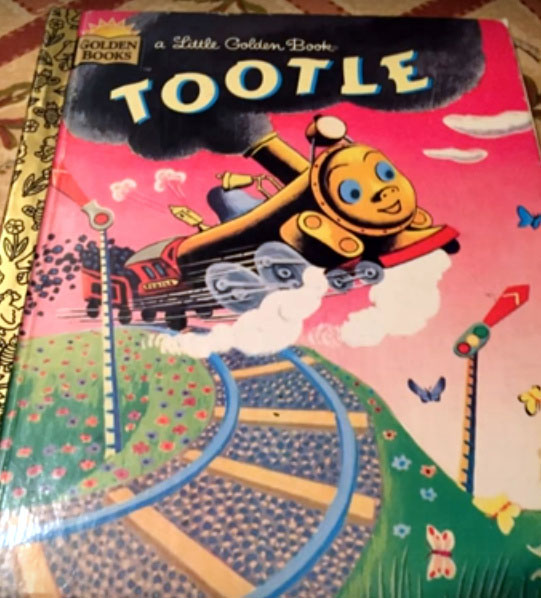
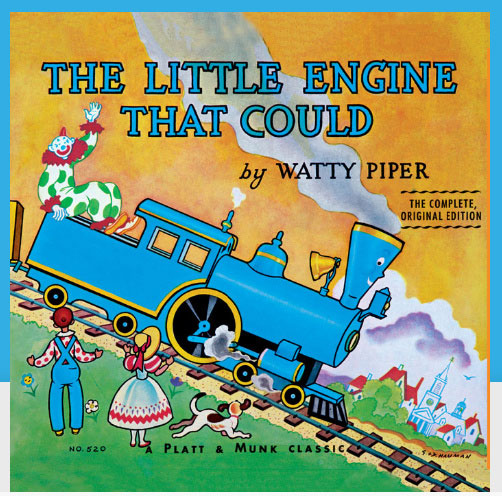
I listened to Sparky and the Talking Train over and over and over. If Sparky could hear a train talk, why couldn’t I?
Then in 1953, when I was eight years old, a miracle happened. My Dad was assigned a work project that required his relocation to San Francisco for three months. And we would all go along—by train! New Haven from home to GCT, then NYC Lake Shore Limited overnight to Chicago, then California Zephyr to the ferry terminal in Oakland, and a fabulous Southern Pacific Lines ferry boat ride across the bay to San Francisco.
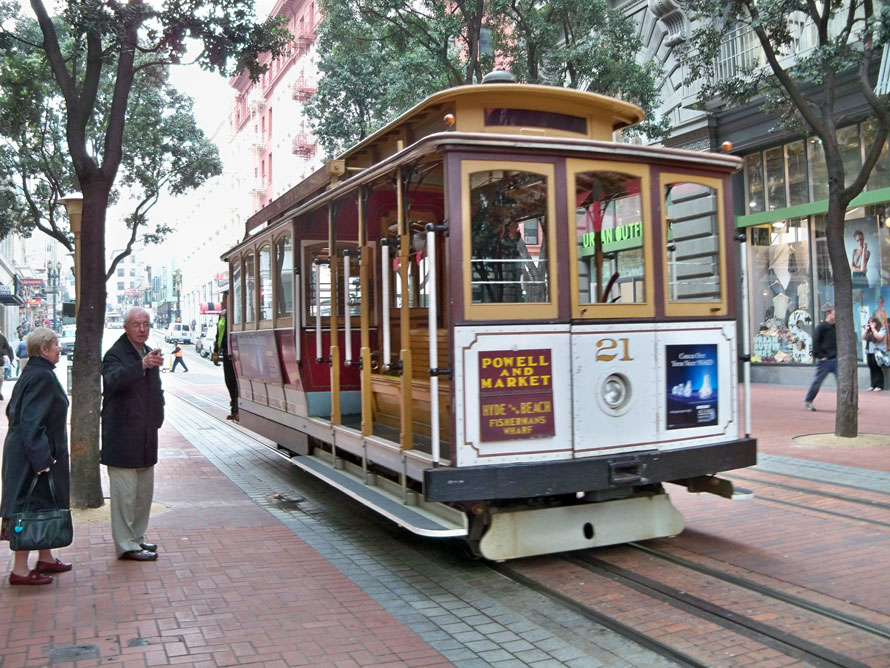
For the next three months, it was cable cars down Nob Hill to Market Street and trolley cars through the Twin Peaks tunnel to Golden Gate Park
The office in the cable car building sold a student ticket card. The office was in the cable room. I’ll never forget the smell of the grease on the cables. It cost $0.50 for ten rides, and I was allowed to take the cable car to school in the morning—by myself—to my third grade class where I was the only non-Chinese in my class.
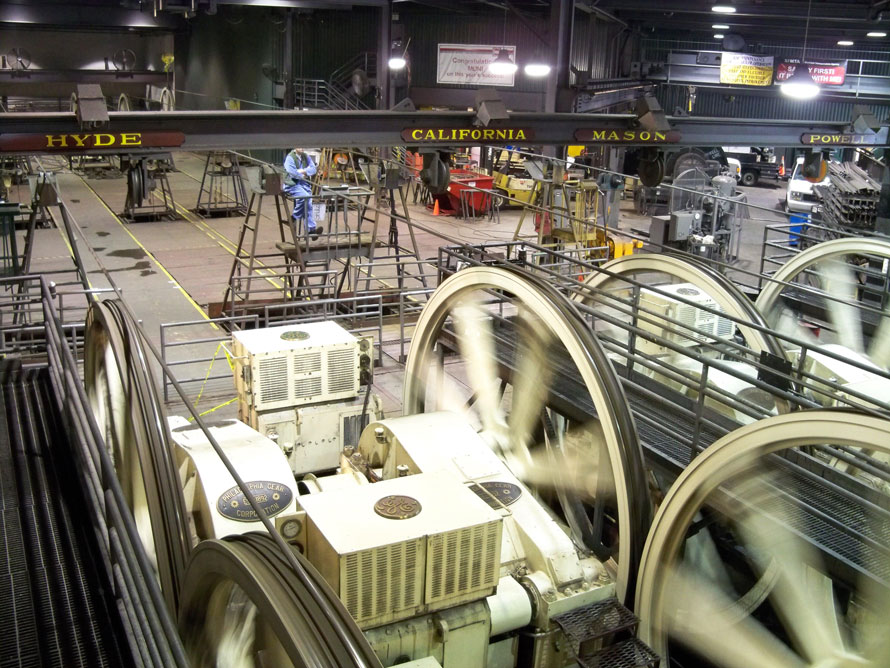
Before long, it was time to return home to New York. This time we took the Southern Pacific’s Coast Daylight to Los Angeles.
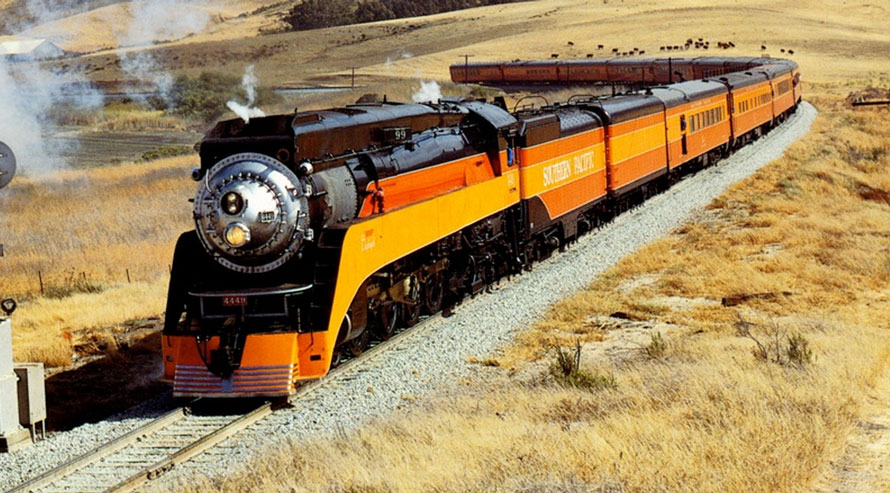
That train made such an impact on me, we named our trawler after it.
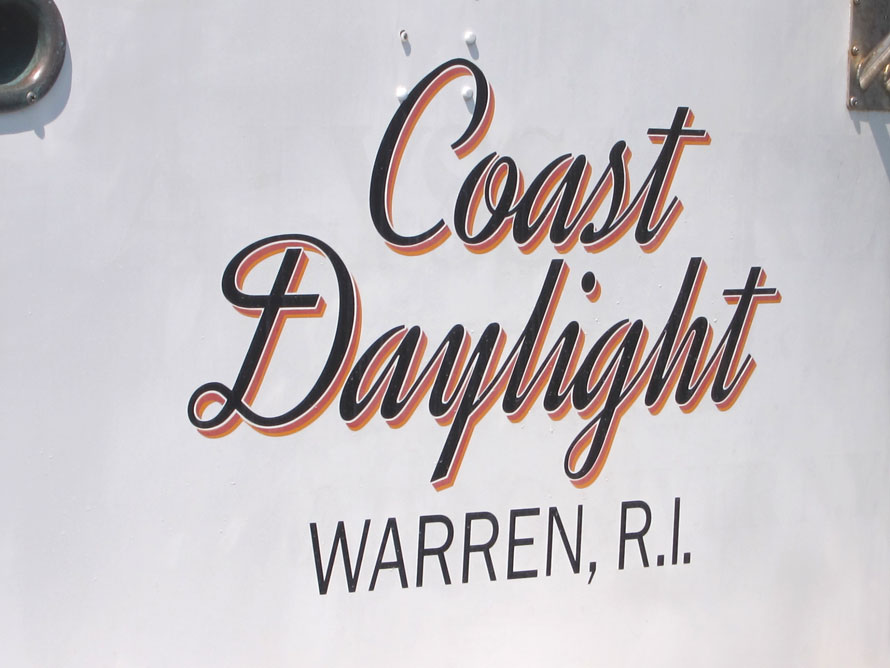
From Los Angeles we took the Sunset Limited. The desert seemed to go on forever until we got to New Orleans, where I had another Trolley ride!
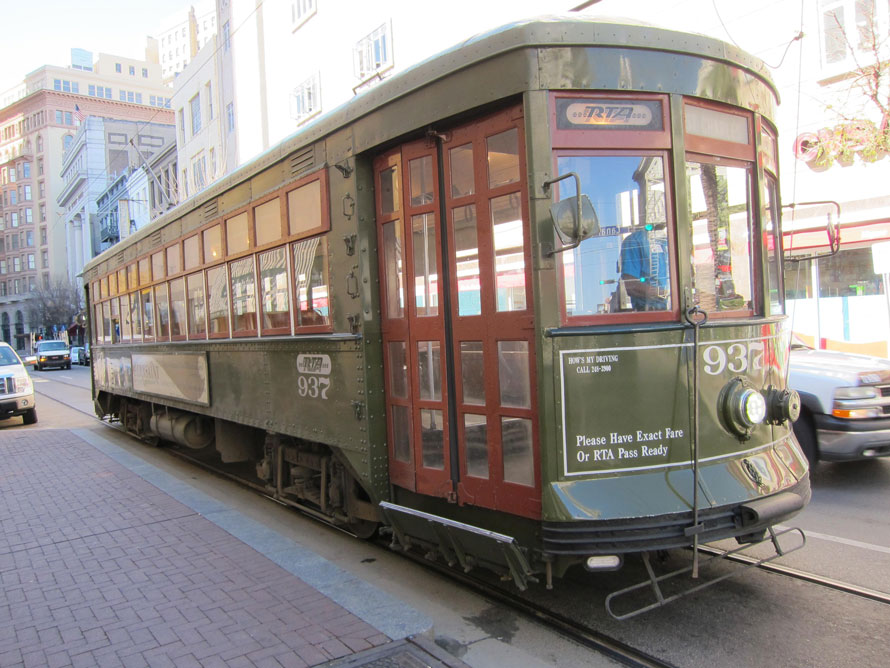
The next night we took the Southern Railway’s best streamliner, the Crescent, to Newark, where Grandpa met us.
My great railroad adventure over, and back home, Dad commuted to his job in Manhattan on the NYC Harlem Division. I remember we drove to the station to meet his train on the hottest summer days. There was a strong smell of creosote from the heat baked wooden ties. Dad’s train always had the “new” coaches with something unique to commuter trains—air conditioning.
Then we moved to Connecticut, so I was reintroduced to the New Haven. I jumped at every opportunity to take the train into New York Grand Central Terminal. WOW!
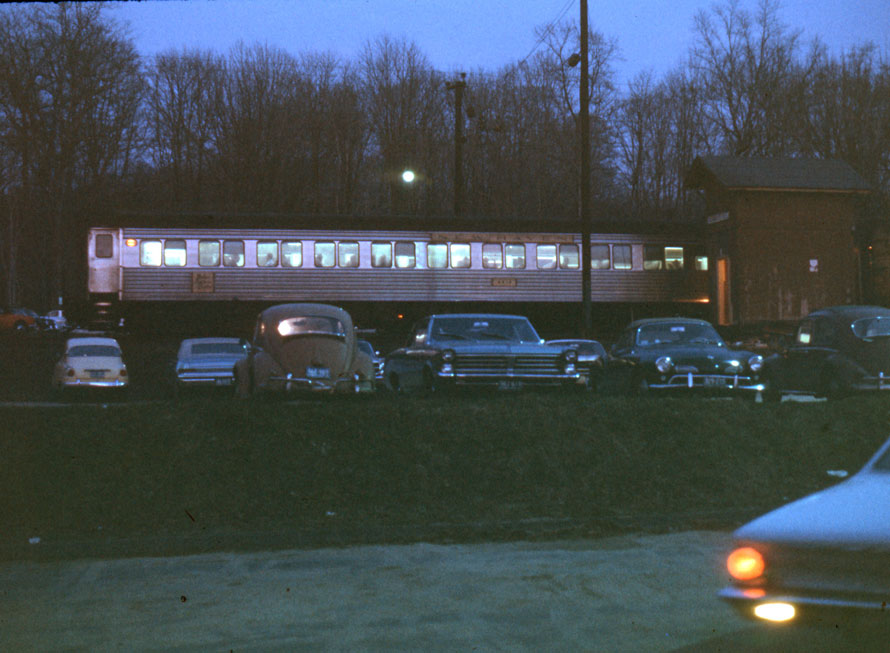
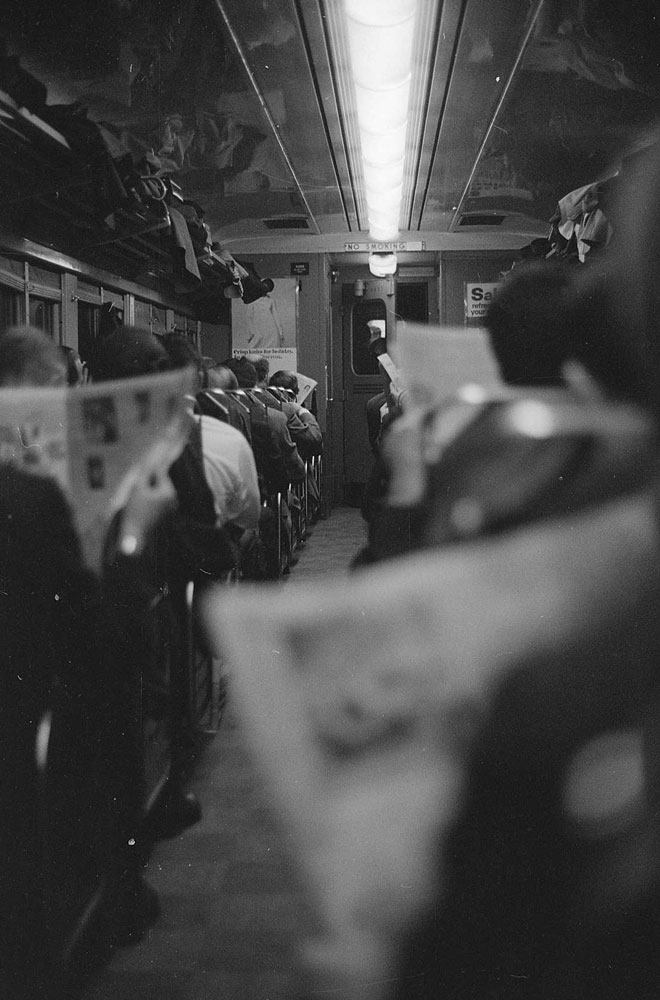
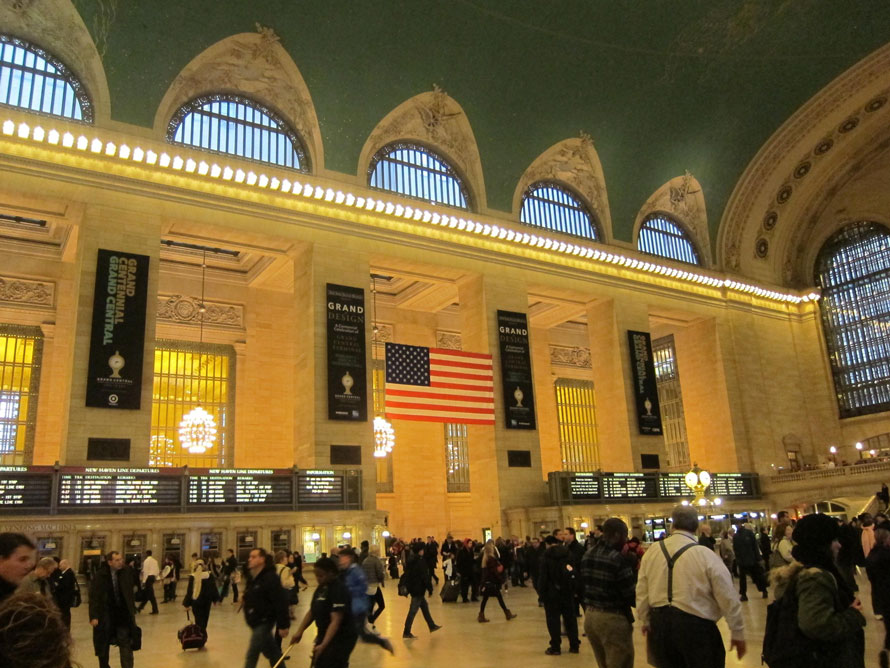
Age sixteen meant I could work doing something other than mowing neighborhood lawns, so I got a job in midtown Manhattan and became a daily commuter from Talmadge Hill on the New Canaan Branch to GCT for my job, then home on the 5:34 express. I made the train home with seconds to spare, and over time met the crew, who allowed me to ride with the engineer in the operating cab. Over months, I learned everything I could about the New York Central to Woodlawn, and New Haven between Mt. Vernon and Stamford.
One day the engineer asked me: “Bob, if you are so interested in the railroad, why not get a JOB on the New Haven?” Eureka! That thought had never occurred to me!
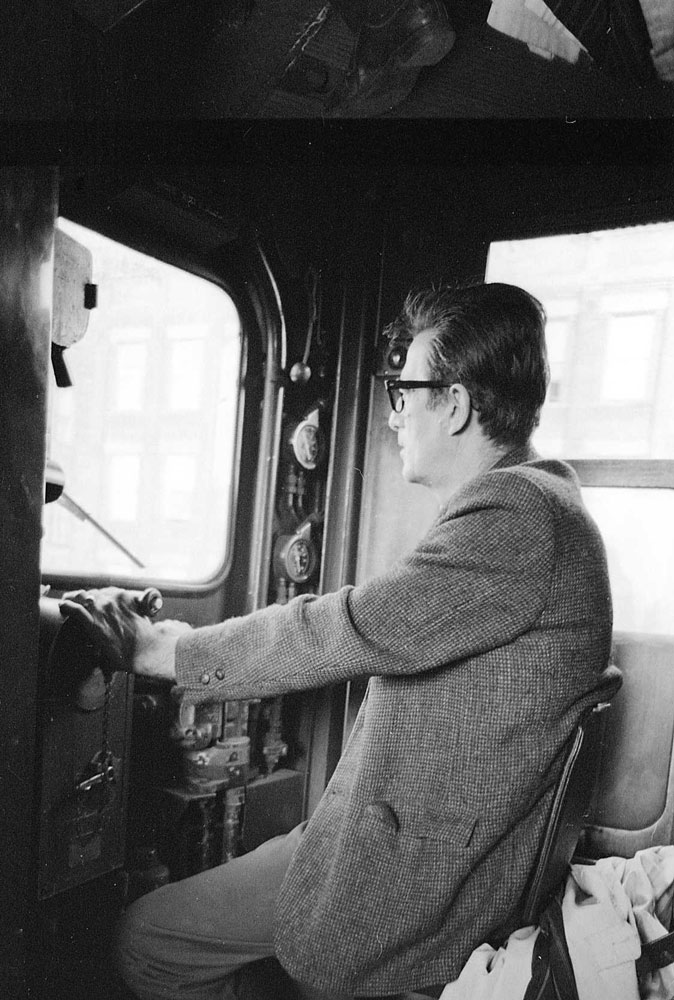
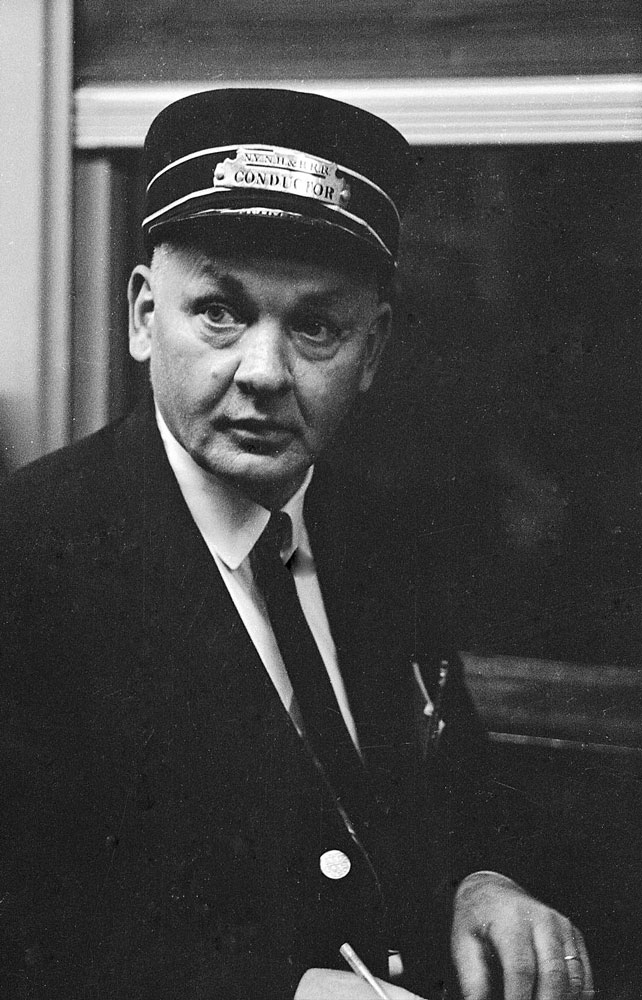
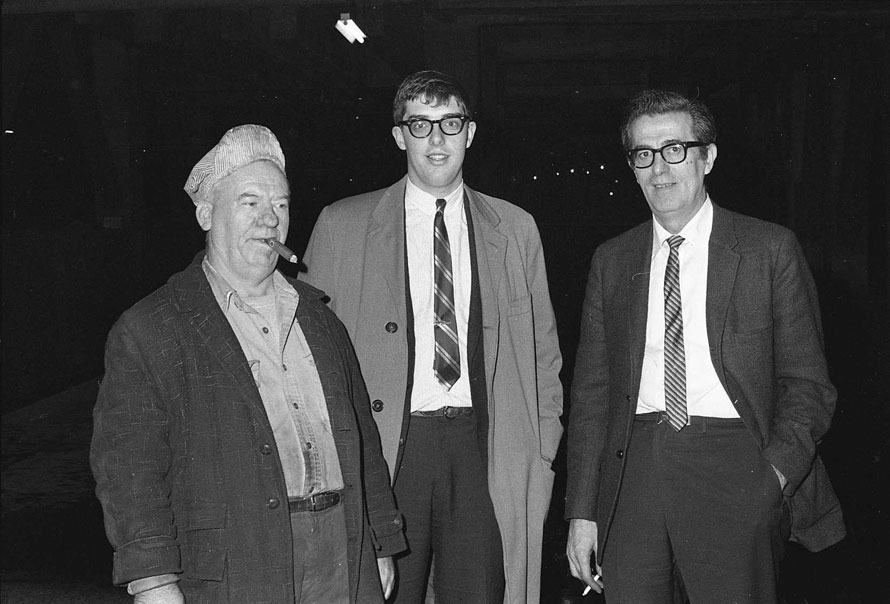
The next summer I was hired as ticket clerk at the busy Stamford, Connecticut station. Lots of fun, great money, and no trains got by without my seeing them.
Now railroading was really in my blood. Lots of time hanging around the Maine Central in Waterville, Maine taught me all about Train Orders
Bob has written two previous articles about his time in Waterville. See Maine Central Remembered and A Maine Central Education.
I had memorized the New Haven Book of Rules, so I passed the rules exam on the first day in June 1968, and I was sent to Stamford Tower.
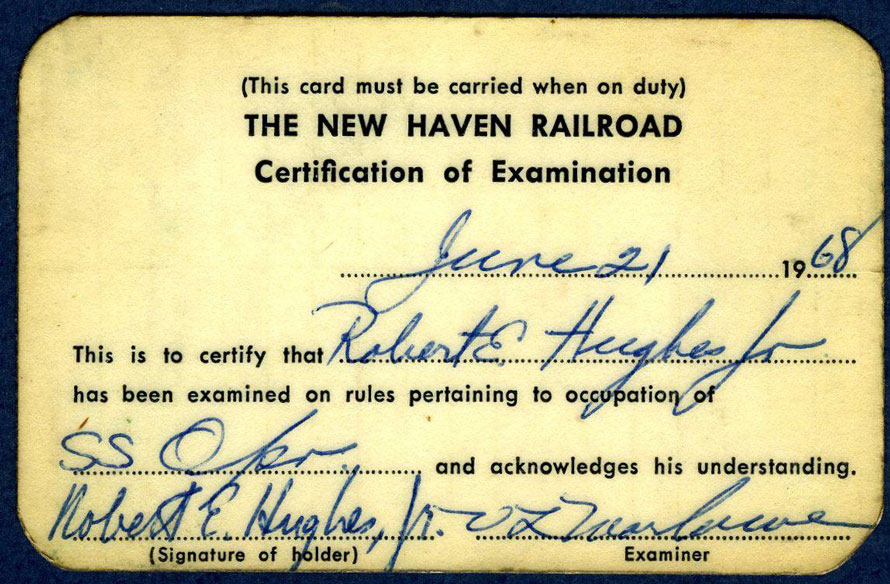
Any operator with more seniority bid jobs anywhere but Stamford; too busy! I held down a first trick job as the youngest operator on the roster, and looked forward to starting my shift every single day and was never bored.
But then on August 20, 1969, only 14 months after I hired on, everything changed. On a hot summer night on the 7.9 mile long single track New Canaan Branch at aptly named Springdale Cemetery siding, a terrible head-on collision killed four men instantly.
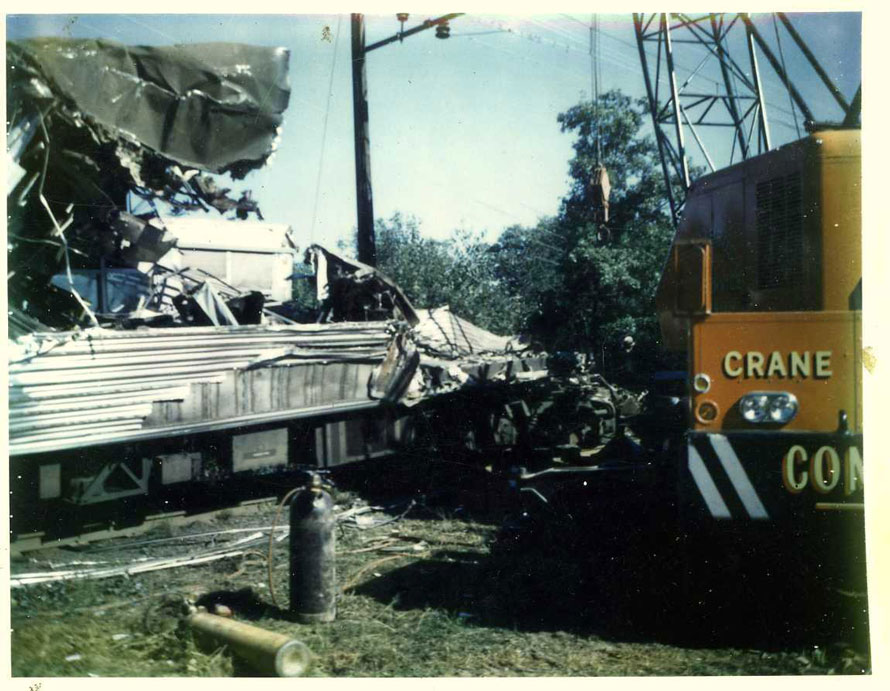
The following day the New Haven wreck train worked all day at the scene and returned to Stamford with what was left of the commuter cars in the collision. It was my first experience with a major railroad accident, and I didn’t like it at all. Besides a feeling of great sadness, I was shaken to the core by the reminder this railroading stuff was deadly serious business with no room for errors or mistakes. No room at all. The sight of the mangled cars where my friend and three others had perished was a stark reminded of how things could turn, in a heartbeat, from normal to tragic.
The New Haven’s wreck train had arrived to begin the cleanup, and it was with anxiety and trepidation that I awaited its return to Stamford Yard. First came the two rear cars of the northbound train, where all the passengers had been riding, with only minor damage and minor injuries like bloody noses.
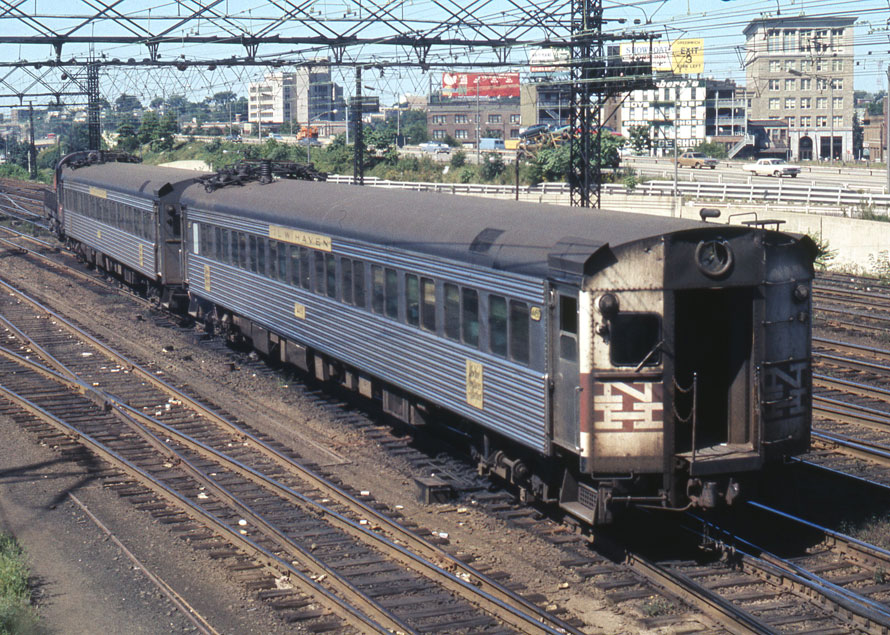
Next came the wreck train with the wreckage of the head car of the northbound train, towed by chains around the underframe connecting to the wreck train caboose. A second trip retrieved the other car, equally damaged.
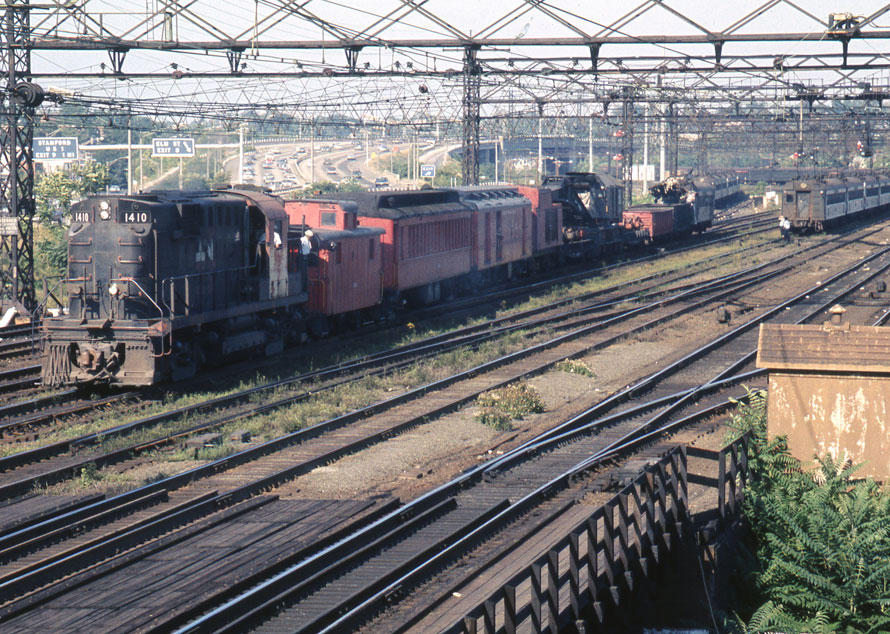
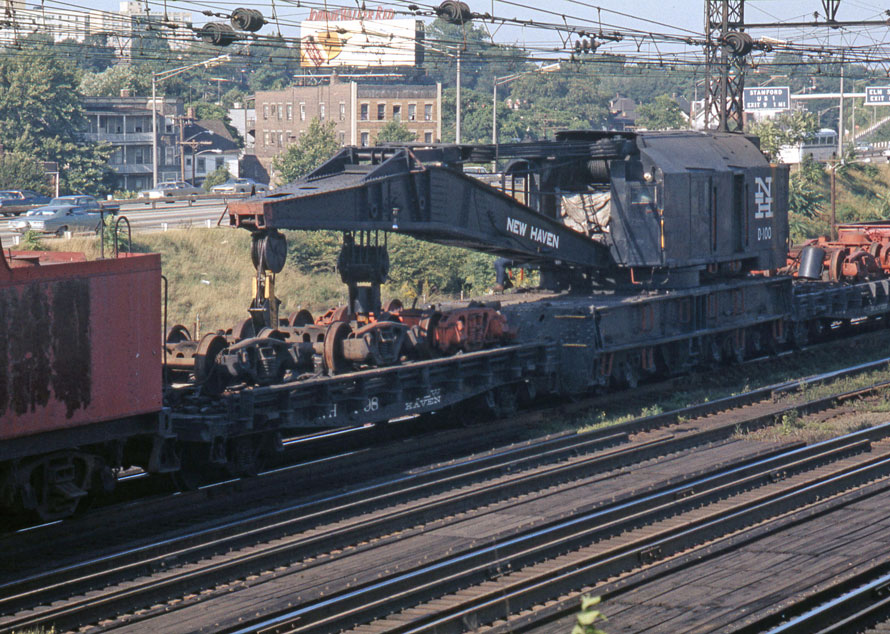
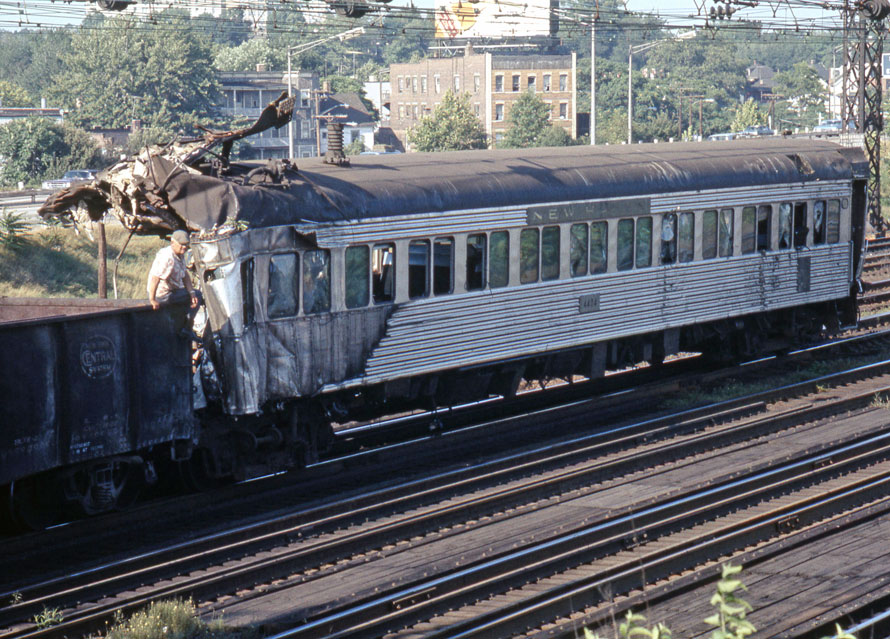
The cars were dragged down to the lower yard in Stamford, where they were at least partially hidden from public view. After my shift in the tower was over, I went down to see for myself. It was unbelievable how devastating a collision could be, and how unyielding steel cars were. With all that inertia, one underframe had ridden over the other, wiping away everything that had been there before.
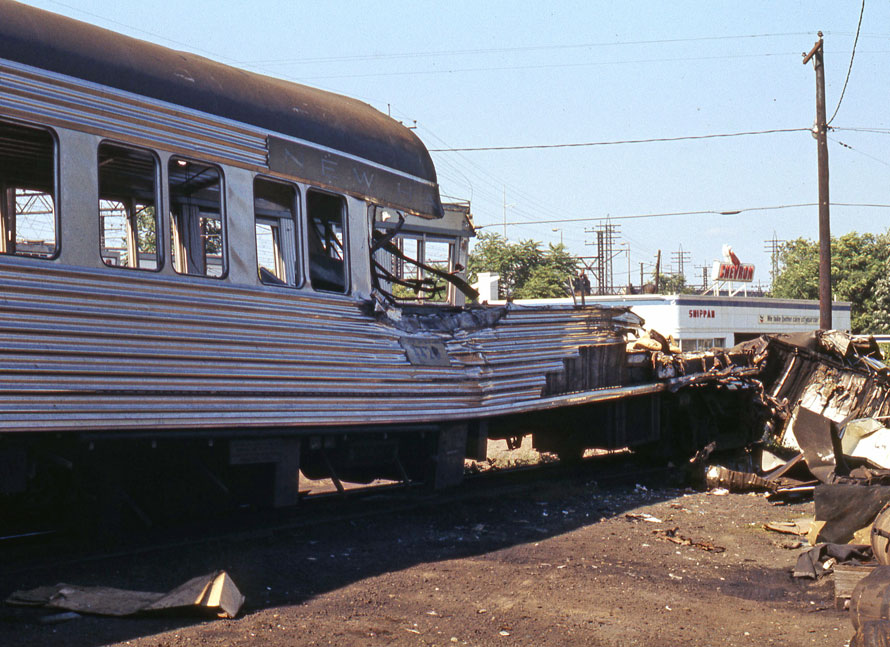
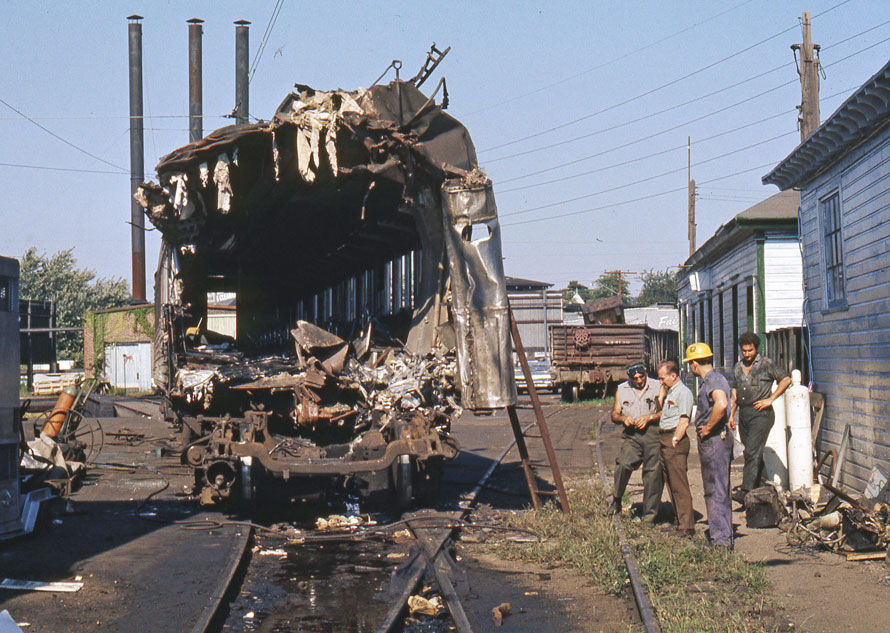
Penn Central had been in charge for less than nine months, and their rules changes had just resulted in the first passenger fatalities on the New Haven Railroad due to operations in more than 34 years. The next day the cars were gone from Stamford Yard. Penn Central, in the dead of night, had towed them, over the famous Poughkeepsie Bridge to the New Haven’s remotely located yard in Maybrook, New York, where they were cut into pieces and sold for scrap.
During the investigation that followed, I think the National Transportation Safety Board officials were surprised to find that Manual Block Train operations was still in service on the New Canaan Branch, only thirty-eight miles from Manhattan, with no automatic block signals.
The NTSB’s determination was that the engineer became distracted, and forgot the Form 19 train order which had been properly executed and delivered to him at Stamford Tower.
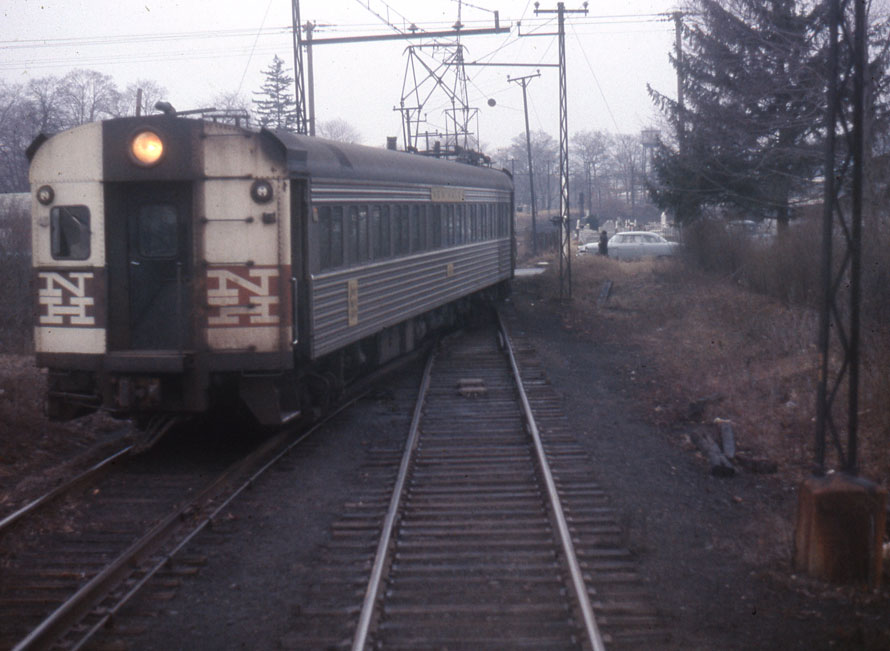
The following day the siding was spiked out of service, and shortly after removed entirely. Within several months, a rudimentary TCS machine was installed to replace the Manual Block System.
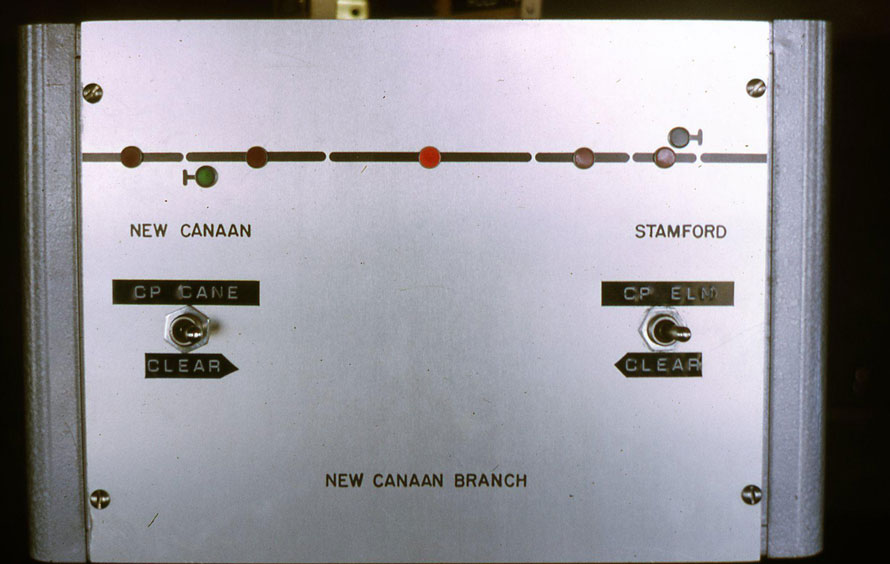
But the siding was never returned to service, and the only benefit to the TCS system was to allow already delayed trains to follow one another up the branch.
Unfortunately, the TCS system came too late for the train crews who were in the wrong place at the wrong time that awful evening.
After nine years of railroading, I left for a thirty-two year career in another industry. But my fascination with railroads and how they operate became a lifelong hobby.
The lessons learned on the railroad have stayed with me to this day. Communications must be clear and understood. Study the operation until you know it cold. Figure out where the vulnerable weak spots are, and talk with the crews to ask what could be improved to make their jobs easier. As long as everyone does what they should, things will almost always, go smoothly.
Oh yes, and leave your cell phone home.
The New Canaan head-on was exactly fifty years ago this week. It made a lasting impression on me, and together with my childhood experiences, sealed my fascination with railroads, and introduced me to an enjoyable lifetime hobby.
(I’ve written more about the cause of the accident in the PC Post Summer issue.)
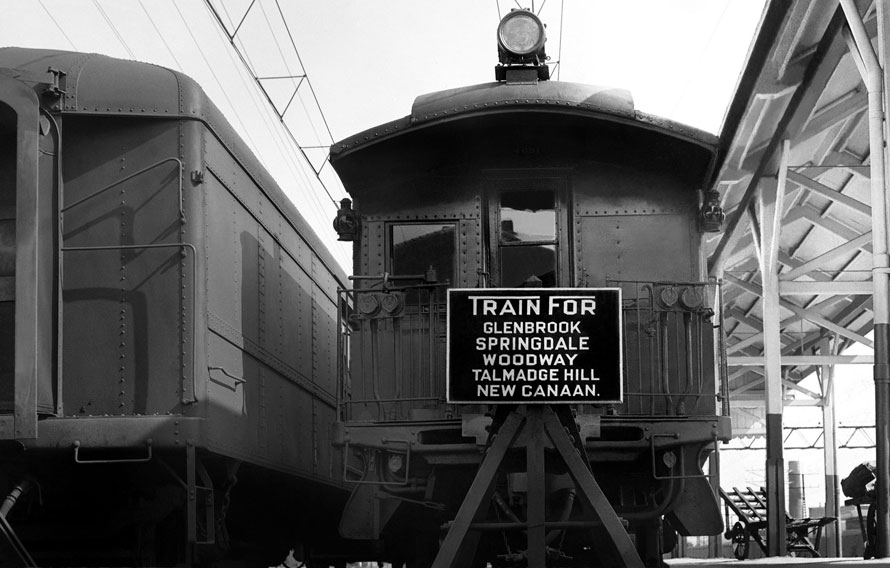
Bob Hughes – Copyright 2019
Enjoyed this latest post – a lifetime love of trains! I was particularly moved by the inclusion of the photo of the Little Golden Book “Tootle”! I still have my copy I remember my parents reading to me. There is a newer version out, but they have left out quite a bit of the original which is too bad. “Stay on the tracks, no matter what!” My love has been life long as well – I grew up in St. Thomas, Ontario and remember watching trains block or so from our house on the New York Central (Canada Southern) – long blocks of reefers and those lovely streamlined stainless steel passenger trains with the tinted windows and the waving porter looking out the dutch door all pulled by steam! Later I took our young family to New York on the Amtrak Rainbow and stayed at the Biltmore. The Biltmore, the CASO and the Rainbow are now gone but the memories stay!
Thank you Jim. My copy of Tootle got tossed many decades ago (“Mom, you threw away Tootle? How could you!”) Thanks to the internet, I got reunited with the memories from the book. I have to admit my heart skipped a beat when I saw Tootle again, after so many years.
thanks……very enjoyable…..I worked for the New Haven Line for 34 yrs…starting in 1973-2007…..I was a Signal Helper in the Bridgeport Gang, and worked my way up to Signal Supervisor New Have Line…from New Haven to New Rochelle…including the 3 branches…New Canaan, Danbury, and the Waterbury……and enjoyed my entire time there……retired now…..12 yrs…..moved from Connecticut to North Carolina……thanks again down memory lane…….Dave Nichols.
Dave you’re welcome! We almost crossed paths on the NH, since I was there from 1968-1974. Maintainer in Stamford was Gordy Hargrove. Some of the best, and certainly the most fun, years of my life.
Bob another great story! so many great pictures you shared with us! Looking at the pictures from the wreck are so sad, reminded me of the ones at Stamford Yard that Ray Hunter lost his life in, they blamed it on him but awhile later on the truth came out when the did a test on the Cab Signal bulb in the cab of his M-2 he was not at fault. Thank you for taking so many pictures, wish I had taken more.
John, when I took those many photos, it was always in the back of my mind that someday people might enjoy seeing what things were like “back in the day”. And it is through this website, Facebook pages, and email, that happily this has happened.
Bob, Thanks for posting, I am certain you would agree that we were both very lucky to have
worked on the New Haven so long ago. I started on my 16th birthday and retired halfway
through my 47th year of service. I spent 42 years in management positions in Boston,
Washington, Philadelphia and Chicago BUT it was those first few years on the New Haven
that were both the most meaningful and the most enjoyable. Perhaps you are not aware that
when you were working the first trick at Stamford nearly every other operator admired the
fine job you did and the professional attitude that you consistently displayed. I readily admit
that I stayed away from SS38 because it was much too busy for a guy going to college and
later grad school (although I did eventually work 3rd trick there one night a week). I am glad
to know that I’m not the only one who looks back at those days and marvels at the fact that
we were actually getting paid to be there, wow!!! Looking back to the beginnings of my
railroad career I am proud to be able to say I was a New Haven man and that is something
that you and I will always have in common. Once again, thanks for your post.
CJ Demotses, Tarpon Springs, FL
Thanks, Carl. Like you, those first years in the tower were the best of my career. At the LIRR I wore suit and tie every day, missing the tower vs. my management position. LIRR paid for my Fordham MBA, but could not offer jobs that I found interesting or fun. That’s why I left for Magazine Printing, which was also a very satisfying job (and more money). Do you get to the Northeast at all?
Bob: Wonderful story about your RR career and the companies you loved. I always loved the gritty feeling of the poor New Haven, which still maintained an aura of “class” despite its “bum” image. The LIRR was my home road, and my Dad worked in management. I spent most of my life chasing Long Island trains in the days of ALCO. The Maine Central is my current research project. I invite you to Google New England Steam Corporation and learn about the restoration of Maine Central 470, which was once a park fixture in Waterville.
Richard, thank you and we have lots to talk about. I spent four years in Waterville (Colby College) and have lots of photos of MEC 470 in the park next to Tower A taken 1965-1972. Lots to talk about, I may have crossed paths with your Dad on the LIRR. Please contact me at bhughes914@gmail.com so we can fill in the gaps.
Bob, I am impressed with your posting. It brings back a lot of memories for me. I hired out on the New Haven in 1961 as a clerk working summers while I was in college. After trying a couple of lines of work I returned full time to the New Haven in 1966 and ended my career in 2008.
I was working as the budget assistant in the General Superintendent of Transportation’s office in the GOB in New Haven when the collision at Springdale Cemetery on the New Canaan Branch occurred and remember the investigation very well.
I also noticed that the Rules Examiner who signed your Rules Exam card was V.L.Marlowe, a good friend of mine, who ended his career as Director of Operating Rules at Metro North. Vinny’s office was next to mine on the 11th floor of the Graybar Building over Grand Central in New York. I was Director of Station Services and Facilities and later Senior Director-Performance Quality in those days.
For me the New Haven RR was the “family business”. My father, brother, grandfathers, uncles and even one of my great grandfathers. were New Haven men. It was a long and rewarding career. I made a lot of friends. I love reading posts like yours. It brings back lots of good memories.
Fred Palmer